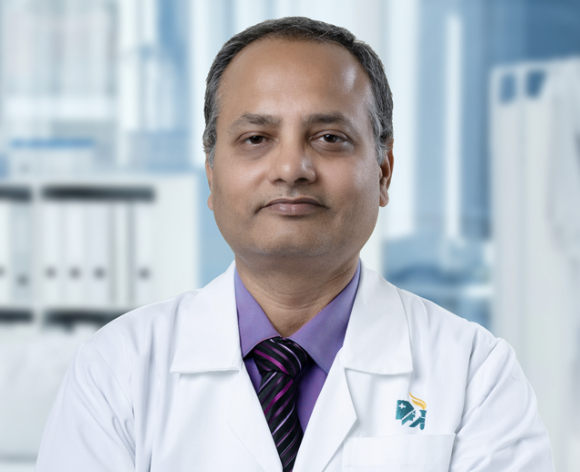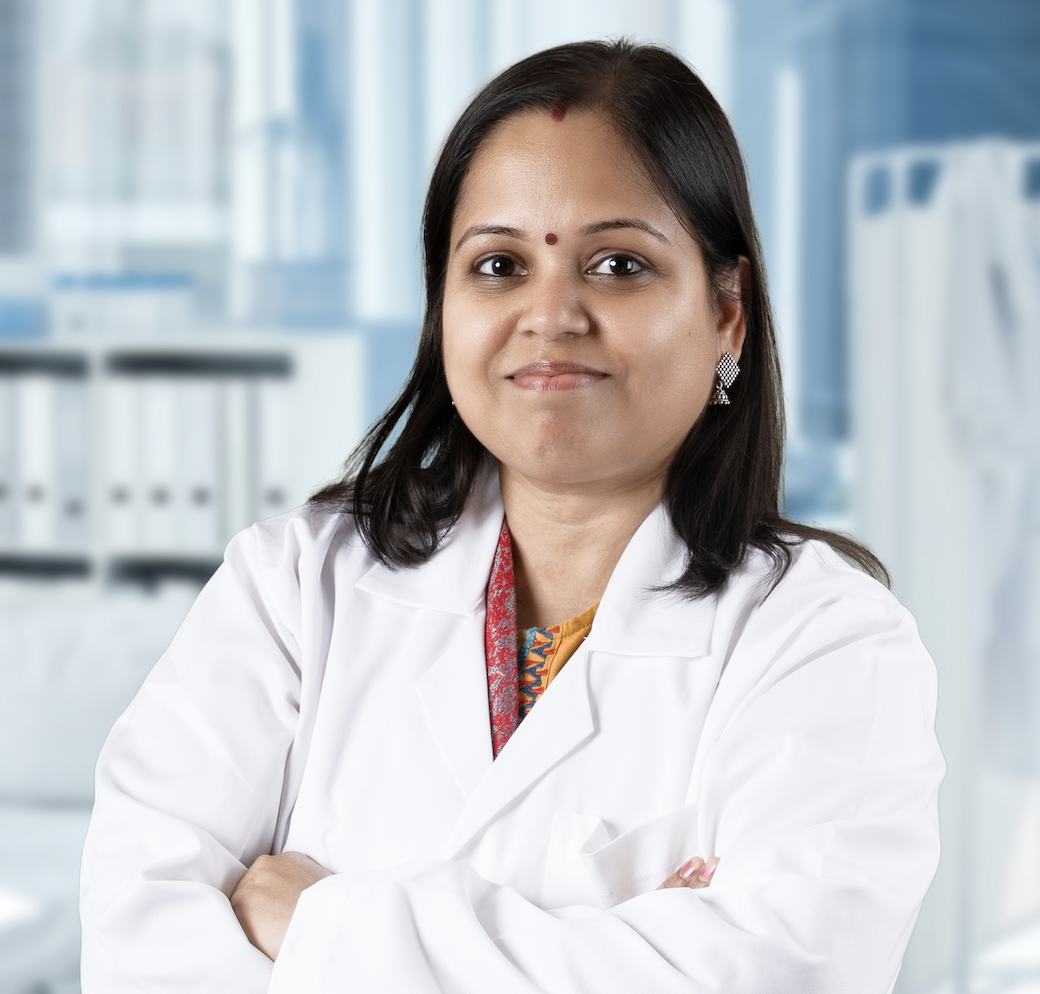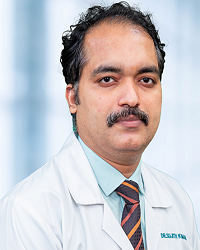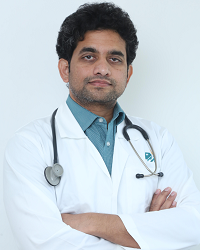Could not find what you are looking for?
- Diseases and Conditions
- Sarcoma - Early Signs, Risk Factors, Diagnosis, and Treatment Explained
Sarcoma - Early Signs, Risk Factors, Diagnosis, and Treatment Explained

Sarcoma is a rare type of cancer that develops in the bones, muscles, fat, or connective tissues. Because it can occur in many different parts of the body and present in various ways, understanding sarcoma can feel particularly challenging. This comprehensive guide provides clear, compassionate, and easy-to-understand information about sarcoma—covering its symptoms, how it is diagnosed, treatment options, and what to expect throughout your journey. Our aim is to help you feel informed, supported, and empowered to face this condition with confidence and hope.
What Is Sarcoma?
Sarcoma is a rare type of cancer that starts in the body's connective and supportive tissues. These tissues are what connect, support, and surround our organs and bones. They include muscles, fat, blood vessels, nerves, tendons, and fibrous tissue.
Because these tissues are found everywhere in the body, a sarcoma can develop almost anywhere. However, they are most commonly found in the arms and legs. While the term "sarcoma" can sound alarming, it's important to remember that it is a very rare cancer. It accounts for less than 1% of all new cancer cases. This rarity is a key reason why it's so important to be treated by a team of specialists who have extensive experience with this specific type of cancer. Early detection and expert care can significantly improve outcomes.
Types of Sarcoma
Sarcoma is not a single disease; it is a group of over 70 different subtypes. Each type is named after the kind of tissue in which the cancer begins. There are two main categories of sarcoma: bone sarcomas and soft tissue sarcomas.
1. Soft Tissue Sarcomas
These are the most common types of sarcoma. They develop in muscles, fat, blood vessels, nerves, and fibrous tissue. Some of the most common subtypes include:
- Liposarcoma: This is a very common type. It originates in fat cells.
- Leiomyosarcoma: This type develops in smooth muscle tissue, which is found in organs like the stomach, intestines, and blood vessels.
- Synovial Sarcoma: This cancer often starts near a joint, such as the knee, and is more common in adolescents and young adults.
- Undifferentiated Pleomorphic Sarcoma (UPS): Formerly known as malignant fibrous histiocytoma (MFH), this is a common high-grade sarcoma that can develop almost anywhere.
- Rhabdomyosarcoma: This type originates in skeletal muscle and is one of the most common soft tissue sarcomas in children.
2. Bone Sarcomas
These are cancers that start in the bone itself. They are much rarer than soft tissue sarcomas. The most common subtypes are:
- Osteosarcoma: This is the most common type of primary bone cancer, especially in children and young adults. It starts in the cells that form bone tissue.
- Chondrosarcoma: This is the second most common type of primary bone cancer. It starts in the cartilage cells.
- Ewing Sarcoma: This is a very rare and aggressive bone cancer. It is most common in children and teenagers.
What Are the Causes and Risk Factors for Sarcoma?
Unlike many common cancers, the exact causes of most sarcomas are not fully known. For the majority of people diagnosed, there are no clear reasons for why they developed the disease. However, researchers have identified several factors that may increase a person's risk.
Known Risk Factors:
1. Genetic Syndromes: Certain rare, inherited genetic conditions can increase the risk of developing sarcoma. These include:
- Li-Fraumeni syndrome: Caused by a defect in the TP53 gene, this syndrome significantly increases the risk of various cancers, including sarcomas.
- Neurofibromatosis type 1: This condition can lead to nerve tumors, and in some cases, these can become cancerous.
- Gardner syndrome: This syndrome can cause a person to develop many polyps in the colon and an increased risk of desmoid tumors, a type of sarcoma.
2. Previous Radiation Therapy: Patients who have received high-dose radiation to treat a previous cancer have a slightly higher risk of developing a sarcoma in the treated area many years later.
3. Lymphedema: Chronic swelling, often in an arm or leg, caused by a damaged lymph system can slightly increase the risk of developing a rare type of sarcoma called angiosarcoma.
4. Exposure to Certain Chemicals: Some studies suggest a possible link between a higher risk of sarcoma and exposure to certain chemicals like vinyl chloride and arsenic.
It's important to remember that having one or more of these risk factors does not mean you will definitely get sarcoma. Most people with these risk factors will never develop the disease, and most people with the disease have none of the known risk factors.
What Are the Symptoms of Sarcoma?
Sarcomas often grow silently in the early stages, which can make them difficult to detect. This is because they can form in flexible tissues and may not cause pain until they are quite large.
Common Early Signs:
- A new lump or swelling: The most common symptom is a painless lump that can be felt under the skin, especially on an arm or leg.
- The lump is getting bigger: A lump that is steadily increasing in size, even if it's not painful, should be a cause for concern and needs to be checked by a doctor.
- Persistent Bone Pain: For bone sarcomas, the most common symptom is a persistent bone pain that may be worse at night or with activity. This pain can be mistaken for "growing pains" or a sports injury.
Advanced Symptoms:
As the tumor grows, it may press on nearby nerves or muscles, leading to more noticeable symptoms.
- Pain: The lump or bone may become painful if it's pressing on a nerve.
- Numbness, tingling, or a limp: This can happen if the tumor is affecting a nerve or is near a joint.
- Abdominal Pain: If the sarcoma is in the abdomen, it can cause a feeling of fullness, abdominal pain, or a noticeable mass.
- Unexplained Weight Loss or Fatigue: These can be signs of more advanced disease.
If you find a new lump on your body, particularly one that is growing or is larger than a golf ball, it is crucial to see a doctor promptly. While most lumps are benign (non-cancerous), a timely evaluation is the best way to ensure an accurate diagnosis and the most effective treatment.
How Is Sarcoma Diagnosed?
Diagnosing sarcoma requires a careful and methodical approach. It is often a multi-step process that starts with a physical exam and a detailed discussion of your symptoms with your doctor.
Diagnostic Steps and Tests:
1. Physical Examination: Your doctor will feel the lump or swelling, checking its size, location, and firmness. They will also assess for any tenderness or changes in your movement.
2. Imaging Scans: If your doctor suspects a sarcoma, they will order imaging tests to get a clear picture of the lump.
- MRI (Magnetic Resonance Imaging): This is often the preferred scan for soft tissue sarcomas and bone sarcomas. It uses magnetic fields to create detailed images of soft tissues and bones, helping doctors determine the size and exact location of the tumor.
- CT (Computed Tomography) Scan: A CT scan uses X-rays to create cross-sectional images. It is often used to check if the cancer has spread to other parts of the body, such as the lungs.
- PET (Positron Emission Tomography) Scan: A PET scan uses a special dye to highlight areas of active cell growth, which can help determine if the tumor is cancerous and if it has spread.
3. Biopsy (The Definitive Test): A biopsy is the only way to definitively diagnose sarcoma. A small sample of the tumor is removed and sent to a lab to be examined by a pathologist, a doctor who specializes in diagnosing diseases. The type of biopsy depends on the tumor's location.
- Core Needle Biopsy: A hollow needle is used to extract a small core of tissue from the tumor. This is the most common type of biopsy.
- Surgical Biopsy: In some cases, a surgeon may need to remove a piece of the tumor or the entire tumor to get an accurate diagnosis.
It is highly recommended that the biopsy be performed at a specialized cancer center with a team experienced in sarcoma care. An improper biopsy can sometimes make future treatment more complicated.
Staging and Grading of Sarcoma
Once the diagnosis is confirmed, doctors will determine the tumor's "stage" and "grade." These two factors are critical for guiding treatment decisions and predicting the patient's prognosis.
Grading: The grade describes how aggressive the cancer cells look under a microscope. It is based on three factors: how different the cells look from normal cells, how quickly they are multiplying, and the amount of cell death in the tumor.
- Low-Grade: The cells look similar to normal cells, are dividing slowly, and the tumor is less likely to spread.
- High-Grade: The cells look very different from normal cells, are dividing rapidly, and the tumor is more likely to grow and spread.
Staging: The stage describes the size of the tumor and how far it has spread. The most common system combines the tumor's size, grade, and whether it has spread to nearby lymph nodes or distant parts of the body.
- Stage I: The tumor is low-grade. It may be any size but has not spread to lymph nodes or other organs.
- Stage II & III: The tumor is high-grade and may have spread to nearby tissues or lymph nodes.
- Stage IV: The cancer has spread (metastasized) to distant parts of the body, most commonly the lungs.
What Are the Treatment Options for Sarcoma?
Treatment for sarcoma is highly personalized and depends on the tumor's type, grade, stage, and location, as well as the patient's overall health. A multidisciplinary team of specialists, including surgical oncologists, radiation oncologists, and medical oncologists, will work together to create a comprehensive treatment plan.
1. Surgery
Surgery is the cornerstone of sarcoma treatment. The primary goal is to remove the entire tumor with a margin of healthy tissue around it to ensure no cancer cells are left behind.
- Limb-Sparing Surgery: For sarcomas in the arms or legs, this is the most common approach. The surgeon removes the tumor while preserving the limb. This often requires complex reconstructive surgery to repair the area.
- Amputation: In rare cases, if the tumor is very large, has invaded vital nerves or blood vessels, or cannot be fully removed, amputation may be necessary. This is a last resort, and modern surgical techniques have made it much less common.
2. Medical Treatment (Chemotherapy, Targeted Therapy, Immunotherapy)
- Chemotherapy: Chemo uses powerful drugs to kill cancer cells throughout the body. While not effective for all types of sarcoma, it is often used for high-grade sarcomas, especially if they have spread. It may be given before surgery to shrink the tumor or after surgery to kill any remaining cells.
- Targeted Therapy: These drugs work by targeting specific changes in cancer cells that help them grow and spread. They are tailored to the unique genetic makeup of a specific sarcoma subtype.
- Immunotherapy: This is a newer form of treatment that helps a patient's own immune system recognize and destroy cancer cells. Immunotherapy drugs are showing promising results for some types of sarcoma.
3. Radiation Therapy
Radiation therapy uses high-energy X-rays or particles to kill cancer cells. It is often used in combination with surgery.
- Neoadjuvant Radiation (Before Surgery): Giving radiation before surgery can shrink the tumor, making it easier to remove and potentially allowing for a less extensive operation.
- Adjuvant Radiation (After Surgery): Radiation after surgery can kill any remaining cancer cells in the area, reducing the risk of the cancer returning.
4. Proton Therapy
Proton therapy is a highly advanced form of radiation that uses proton beams instead of X-rays. Unlike X-rays, which deposit energy along their entire path, protons can be precisely aimed to deliver a high dose of radiation directly to the tumor. This reduces the amount of radiation that reaches nearby healthy tissues and organs, which can be particularly beneficial for tumors located near sensitive structures like the spine or heart.
Prognosis and Survival Rates for Sarcoma
Prognosis refers to the likely outcome or course of a disease. For sarcoma, the prognosis is highly individual and depends on several factors, including:
- Stage and Grade: The most significant factor. Low-grade, localized tumors have a much better prognosis than high-grade, metastatic tumors.
- Tumor Size and Location: Smaller tumors and those in a limb generally have a better outcome.
- Patient's Overall Health: Younger, healthier patients tend to respond better to treatment.
While statistics can be a source of anxiety, it's important to remember that they are based on large groups of people and cannot predict what will happen in a specific case. The 5-year survival rate for soft tissue sarcoma can range from over 80% for localized, low-grade tumors to less than 20% for metastatic disease. These numbers are constantly improving with advances in treatment.
Screening and Prevention of Sarcoma
There are no routine screening tests for sarcoma in the general population. The best approach to early detection is to be aware of your body and seek medical attention for any new or growing lumps.
Prevention strategies are limited, but you can:
- Monitor for lumps: Be vigilant about any new, unusual, or growing lumps on your body, especially if they are larger than a golf ball.
- Consult a specialist: If you have a known genetic risk factor, a specialist can help you with a monitoring plan.
- Maintain a healthy lifestyle: While there is no direct link, a healthy diet, regular exercise, and avoiding environmental toxins can contribute to overall wellness.
For International Patients: Your Journey to Apollo Hospitals
Apollo Hospitals understands that seeking medical care abroad can be a daunting experience. We have a dedicated International Patient Services team to ensure your journey is as smooth and comfortable as possible. Our team will assist you with every step, from the moment you make your first inquiry until you return home.
Our Services for International Patients Include:
- Appointment Scheduling: We will help you schedule consultations and appointments with our expert oncologists.
- Travel and Visa Assistance: Our team can provide a visa invitation letter and assist with travel arrangements.
- Airport Transfers: We will arrange for a car to pick you up from the airport and bring you to the hospital or your accommodation.
- Personalized Care: A dedicated patient coordinator will be your single point of contact, helping you with hospital admission, language interpretation, and any other needs you may have.
- Accommodation and Concierge Services: We can assist you with booking local accommodation for you and your family.
- Post-Treatment Follow-up: We will stay in touch with you after your return home to ensure your recovery is on track.
Frequently Asked Questions (FAQs) About Sarcoma
Q1: Is sarcoma curable?
A: Yes, many types of sarcoma are curable, especially when it is found early and is localized. Early-stage, low-grade sarcomas can be successfully treated with surgery alone. Even for more advanced cases, a combination of surgery, radiation, and chemotherapy can lead to a good long-term outcome.
Q2: What is the survival rate for sarcoma?
A: The survival rate varies significantly based on the type, stage, and grade of the cancer. The overall 5-year survival rate for sarcoma is around 68%. However, for localized soft tissue sarcoma, the rate can be over 80%. Your doctor will be able to provide a more accurate prognosis based on your specific case.
Q3: What are the side effects of sarcoma treatment?
A: The side effects depend on the type of treatment.
- Surgery: Can cause pain, swelling, and scarring. Recovery time can vary from weeks to months.
- Radiation: Side effects may include skin irritation, fatigue, and potential long-term stiffness or swelling in the treated area.
- Chemotherapy: Common side effects include nausea, hair loss, fatigue, and an increased risk of infection.
Your oncology team will work with you to manage these side effects and minimize their impact on your quality of life.
Q4: Can sarcoma come back (recurrence)?
A: Yes, there is a risk of recurrence, which can be local (in the same area as the original tumor) or distant (spreading to other parts of the body). Regular follow-up appointments with your doctor are crucial for monitoring for recurrence.
Q5: How is sarcoma different from carcinoma?
A: Sarcoma is a cancer of the connective tissues (bone, muscle, fat, etc.), while carcinoma is a cancer that starts in the cells that line organs (like the breast, lung, or prostate). Carcinomas are much more common than sarcomas.
Q6: What is the typical recovery time after sarcoma surgery?
A: Recovery time is highly individual. It depends on the size and location of the tumor and the complexity of the surgery. Most patients will spend a few days in the hospital. Full recovery can take several weeks to many months, and rehabilitation with physical therapy is often a key part of the process.
Q7: Can a person with sarcoma save their limb?
A: Yes. With modern surgical techniques and combination therapies (chemotherapy and radiation), most patients with sarcoma in a limb can undergo limb-sparing surgery, which means the surgeon can remove the tumor while preserving the limb. Amputation is now a rare last resort.











